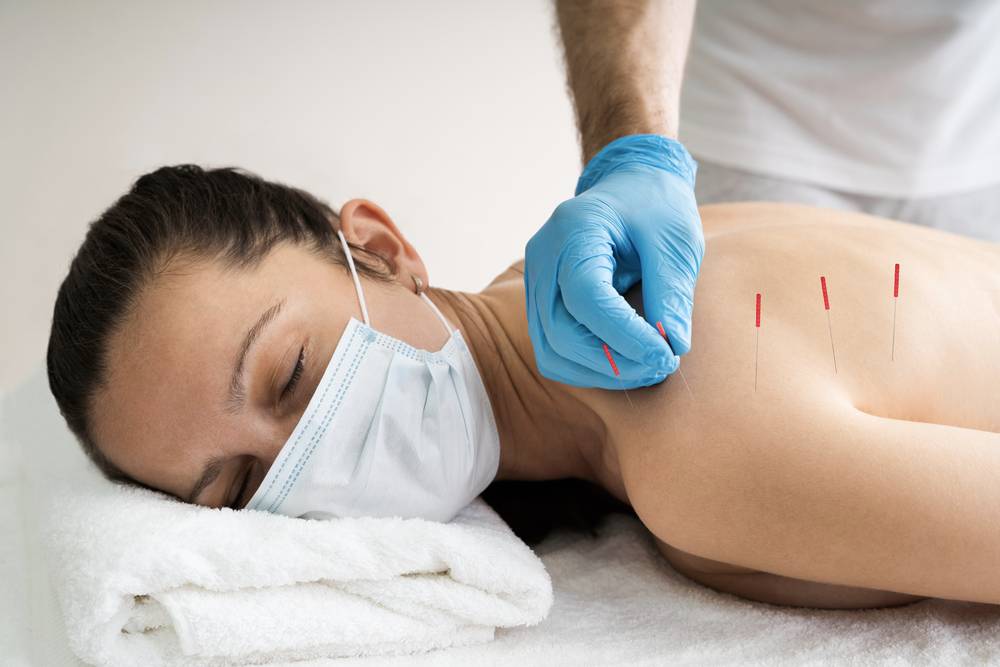The APTA (American Physical Therapy Association) states Dry Needling is a skilled intervention that uses a thin filiform needle (solid core) to penetrate dianabol in usa online the skin in order to stimulate underlying muscule and connective tissues for the management of neuromusculoskeletal pain and movement impairments. Dry Needling is a skilled technique administered by a licensed and certified medical provider, that is used to treat dysfunctions in skeletal muscle, fascia, and connective tissue, and, diminish persistent chronic pain which can reduce or restore impairments of body structure and function leading to improved activity and movement participation. Dry Needling as it is known in Westurn Medicine has had several names that Clinicians use to describe the various theoretical approaches to treatment; TDN (Trigger Point Dry Needling), IMS (Intramuscular Stimulation), IMT (Intramuscular Manual Therapy), FDN (Functional Dry Needling) and several others.
Dry needling is a unique treatment approach that is intended to specifically target and restore muscle function and movement. Activity with poor muscle function can lead to further tissue stress and potential damage with the real likelihood of developing acute and or chronic pain. The exact mechanisms of dry needling are complex and still being researched with a growing body of scientific evidence to support a strong role directly seen with the electrical and chemical communications that take place in our nervous system. In short, dry needling has demonstrated to inhibit the transmission of pain signals in our spinal cord which increases the release of our own pain relieving chemicals within our brains. The pain relieving effect of dry needling has been gaining strong support within mainstream Western medicine, with public hospital systems now directly funding its use. Dry needling is not a replacement to conventional medical procedures such as physiotherapy or surgery but has demonstrated improved outcomes when combined with conventional treatment methods.
Needling in a painful area along a muscle is done to provoke a “twitch” response which acts both diagnostically and therapeutically to induce muscle fiber relaxation via the nervous system. The results of dry needling are physiologically beneficially for improved muscle, tendon and myofascial pain and dysfunction.
HOW DOES DRY NEEDLING WORK?
As mentioned previously, the growing body of scientific evidence in dry needling supports the positive effects of inserting a solid filament “needle” into soft tissue for benefits on the electrical and chemical signaling that takes place in our nervous system. These benefits include inhibiting the transmission of pain signals in our spinal cord and at increasing the release of our own pain relieving chemicals within our brains.
THEORETICAL MODEL FOR DRY NEEDLING
When an injury occurs, the brain will make adjustments to regulate your chances of surviving whatever it may be that happened. Therefore consider that muscle stiffness, and compensated movement patterns are part of that survival mechanism and in fact are put into play to help reduce further damage.
Initially, the body will take the necessary measures to provide swelling as a mechanism to stimulate your bodies immune system to undergo the process of tissue repair and healing.
As with any injury, the extent of the healing process is directly influenced by the severity of the injury itself. In the cases of post exercise micro damage which is quite normal, Dry Needling can aid in reducing inflammation, decrease sore or stiff muscle tone; both of which will help at reducing pain.
In the case of chronic pain wherein pain is experienced routinely throughout the year with often a very predictable activity or even time/season; these types of pain are seen to have positive changes occur due to the effects of Dry Needling. In these chronic cases, DN can aid by creating a focused desensitization to the tissue or tissues as well create a short bout of anti-inflammation.
See also Proper HIIT Workouts on a Treadmill
BENEFITS OF DRY NEEDLING
Dry Needling is becoming a popular modality in medical practices, as an effective technique used to treat the common musculoskeletal complaints which is one of the most reported conditions why people seek medical attention. Musculoskeletal diseases/disorders affect more than 1 out of every 2 persons in the US age 18 and over, and nearly 3 out of 4 persons age 65 and over. Of the 3 most common musculoskeletal complaints being trauma, back pain, and arthritis; these complaints are also the primary drivers for health care cost via physician office visits, emergency department walk-in’s, and hospitalization each year. It is for this reasons that more people are currently seeking good therapists certified in evidence based modalities such as BFR and Dry Needling, to fix their pain effectively, without over utilization of medication.
The primary goals of Dry Needling are to desensitize supersensitive structures, to restore healthy motion and function and to possibly induce an acute healing response to the specific tissue. These treatment goals are focused on approaching a broad spectrum of patients, from Chronic Low Back Pain Syndrome to acute Sprains/Strains, potential stress fractures, post-surgical repair/reconstruction late stage muscle tone/pain and neurological conditions such as Multiple Sclerosis (MS) where chronic pain is present.
WHAT WILL I FEEL DURING MY DRY NEEDLING SESSION?
Generally, the needle insertion is not felt; with the local twitch response or sudden slight contraction having the potential to provoke a very brief sensation of pain. The typical pain sensation is described as an “electric shock” or a “cramping” feeling. A desirable reaction is one that elicits a local twitch response, which is diagnosed by the needle insertion following palpation. During and following treatment, patients commonly experience heaviness in the limbs or a pleasant feeling of relaxation. Following your session some muscle soreness may be experienced for up to 24-48 hrs. The application of heat or ice depending of the needling site and drinking plenty of fluids is recommend to reduces the soreness.
IS DRY NEEDLING SAFE?
Dry needling when performed by a licensed and certified medical provider is a safe treatment technique. Here at Lifters Clinic we provide a ‘clean’ technique, where only individually packaged, single use, sterile needles are used. The needles are very fine (.16-.30mm) which are 1/3 to ½ the thickness of a hypodermic needle; which is why there is very rarely any bleeding or bruising at the insertion site. Many clients report some slight to mild soreness in the treated area and referral zone lasting from a few hours to two days.
See also Kickback Workouts: Understanding the Exercise and Identifying Examples
WHERE DOES DRY NEEDLING FIT INTO MY ACTIVE RECOVERY OR REHAB PLANS?
Dry needling is steadily becoming the modality of choice when it comes to treating acute injuries, muscle spasms or muscle pattern imbalances. It is very common to initiate dry needling at the onset of acute pain and or late chronic pain in order to break the pain cycle. Once that is achieved, other treatment options such as corrective exercises or Blood Flow Restriction (BFR) are introduced.
Typically, it may take several visits for a positive reaction to take place, as one of the dry needling goals is to cause mechanical and biochemical changes without any pharmacological means. Therefore, dry needling should be viewed as a cumulative process whereby to achieve an individual person threshold after which the pain cycle is disturbed.
While dry needling is very useful in quickly relieving pain it by no means will necessarily address the source or cause of the pain. As an example, an individual with chronic joint osteoarthritis pain that presents with associated secondary muscular pain as a result of muscles compensation leading to movement avoidance due to pain would find dry needling to be a method of relieving their pain; with the knowledge that it will not reverse their joint osteoarthritis. Therefore, Dry needling should be looked at as a complimentary service that should be seen as a part of the plan of care which includes therapeutic exercise, movement correctives, BFR, and or soft tissue mobilization.
The benefits of Dry Needling frequently include more than just quick relief from pain with many participants expressing increased energy levels, improved appetite and even sleep with an overall sense of wellbeing.
See also Spartan Workout: Preparing for Spartan Races



